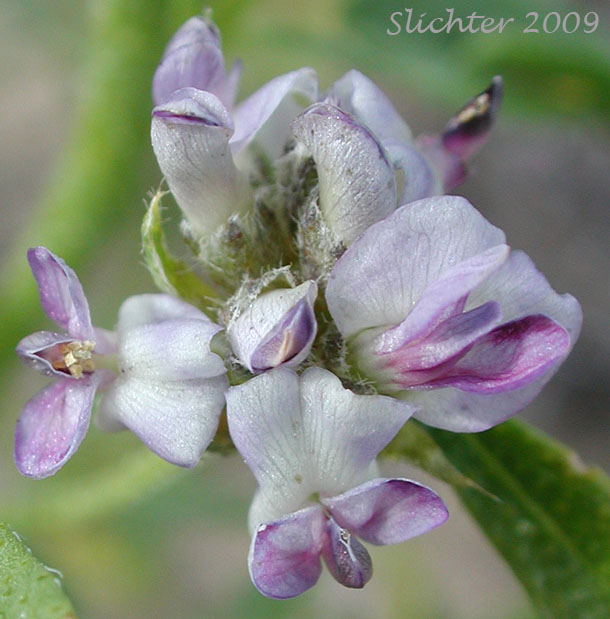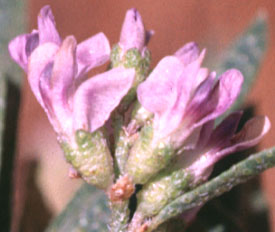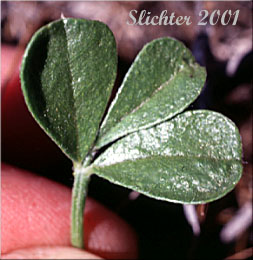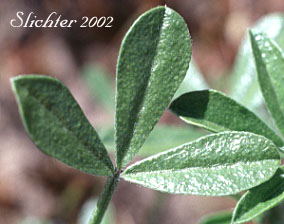

 Photo
at right illustrates lance-leaf scurf-pea near the Avery gravel pit in the eastern
Columbia River Gorge...........May 5, 2001.
Photo
at right illustrates lance-leaf scurf-pea near the Avery gravel pit in the eastern
Columbia River Gorge...........May 5, 2001.
Lance-leaf scurf-pea is an erect to spreading, freely branched perennial from 10-60 cm high with varied herbage, which ranges from smooth and hairless to glandular or covered with appressed hairs all pointing the same direction. The stem leaves are compound ternate (3 leaflets) which are narrowly obovate to elliptic-oblanceolate in shape, each ranging from 2-3 cm long (See photos at right and below.). The tips of the leaflets are rounded or bear an abrupt point at the tip (seen on the photos of this page.). The leaves are copiously glandular on both surfaces of the blades. The leaves become much reduced in size towards the top of the stem.
The inflorescence is a closely flowered or compact raceme of 10-40 white to light blue flowers. Individual flowers range from 4-7 mm long with a bell-shaped calyx with short, ovate-triangular teeth which are equal in size. The calyx generally measures about 2 mm long and is both glandular and covered with appressed hairs. The corolla measures 4-6 mm long. The banner is broadly elliptic or ovate in shape and measures about 4-6 mm long and about equally as wide. The wings are about 3-5 mm long and 1-2.5 mm wide. The keel measures 2-3 mm long and 1-1.5 mm wide and generally always bears a purple spot at its apex. The pods are broadly ovoid, nearly glabrous, and covered with raised, glandular warts. The pods measure about 4 mm long.
Lance-leaf scurf-pea is found in sandy soils. It may be found on the windward side of active sand dunes or among bunchgrasses or sagebrush.
Lance-leaf scurf-pea may be found from central Washington south to the east of the Cascade Mts. to California and east to Nebraska and Nevada.
 -
-  -
- 